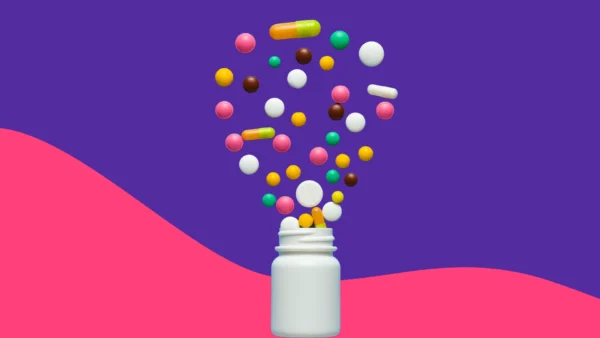As a pharmacist, it’s important to recognize that not all patients have the same needs or circumstances and to adapt your care accordingly. Black, Indigenous, and people of color (BIPOC) patients, in particular, often face unique challenges in the healthcare system.
A long history of medical racism in the U.S. continues to impact BIPOC individuals and contribute to documented racial and ethnic disparities in health care. For example, studies show Black patients may be less likely to receive pain medication than white patients for surgical and non-surgical pain, causing unnecessary unsuffering. The negative outcomes for BIPOC patients are compounded by the (understandable) anxiety about and distrust for the healthcare system and its providers.
As a pharmacist, you have the power to make a positive difference in the care of BIPOC patients. It’s worth considering how you can do so, such as through building trust and open communication. Read on to discover key ways you can improve care for BIPOC patients, whether you work as a pharmacist in a retail, hospital, or other setting.
Racial disparities affecting BIPOC patients
In order to provide quality care for BIPOC patients, it’s essential you understand the numerous disparities that exist in their treatment and health care. The most common disparities include the following.
Access to health care
Getting to a doctor’s office or other healthcare facility can be particularly difficult for BIPOC patients. Challenges like location due to residential segregation can worsen their access to the right care. For instance, some neighborhoods may have limited healthcare facilities, making it hard for patients to receive specialized—or in some cases, basic—care. Studies have shown that Black patients and patients of Hispanic origin are more likely to be uninsured throughout their adult lives than white patients, making health care less affordable and accessible.
Cultural norms
Cultural differences can also affect how BIPOC patients seek and receive health care. In some cases, healthcare providers may not understand the cultural norms of BIPOC patients, which can lead to misunderstandings. For instance, a Native American patient may prioritize traditional healing practices, such as spiritual rituals and herbal remedies, which could be misunderstood by a healthcare provider unfamiliar with these cultural norms.
Medication adherence
Socioeconomic disparities may have negative effects on BIPOC patients’ medication adherence rates. Studies have shown that individuals among various racial and ethnic groups, such as Black and Latinx people, in the United States may be less likely than white patients to consistently take chronic medications. The study found that low education and income level of these groups are also factors associated with poor medication adherence.
What you can do as a pharmacist
Working with patients facing challenges out of their control can be disheartening, but there are things you can do to lessen the burden of those challenges and ensure your BIPOC patients receive the care they need.
Improve your cultural competency
Take the time to learn about the different cultures and beliefs—including specific beliefs about health care—of your patient population. For instance, educating yourself on traditional herbal medicines in Chinese culture may help you better understand and assist Chinese patients with medication management and potential drug interactions. And though it may be hard for you to learn this for all cultures, you should prioritize the ones in your area to ensure you’re able to help your patients most.
Practice active listening and open communication
Encouraging open dialogue with BIPOC patients can help build trust, not only between yourself and your patient but also between your patient and the healthcare system. It’s important to provide your patient with information, but it’s equally important to earnestly listen to their concerns and needs. Practice active listening, which involves focusing on what the patient is saying and responding in a way that shows you heard them and you understand. For example, if your patient tells you they’re nervous to take a medication because a doctor once prescribed something that brought on unpleasant side effects and didn’t seem to care, repeat that concern in your own words—”I understand you had a negative experience with a healthcare provider who didn’t take your side effects into account”—before going on to share your recommendations. This allows patients to feel heard, respected, and more comfortable sharing their concerns and needs.
RELATED: Ways to get to know your customers better
Use inclusive practices
Your patient’s experience at the pharmacy starts before you or any of your teammates even say hello. BIPOC patients often enter healthcare settings that can feel very exclusive, due to things like paperwork that’s only in English or marketing posters that depict only white people. Make your physical pharmacy environment more welcoming and accessible for BIPOC patients by using inclusive language, such as gender-neutral terms; and displaying signage and offering paperwork in multiple languages. The presence of a diverse healthcare team can also promote a sense of inclusivity and trust among BIPOC patients. If no one in your pharmacy is bilingual, be sure to have information on a translation service easily accessible.
Personalize medication counseling
When it comes to medications, one size doesn’t fit all, so it’s crucial to tailor your medication counseling to each patient’s specific needs and preferences. That might include discussing medication options that are particularly effective for certain genetic markers or explaining how to properly take medications according to cultural practices. If BIPOC patients feel more confident in their medication use, that’s likely to improve medication adherence.
Increase awareness of implicit bias
Everybody has biases—often ones they might not be aware of. Implicit bias, in particular, refers to unconscious attitudes or beliefs that can affect how you interact with BIPOC patients. In fact, at least one study found that physicians with greater implicit bias have provided lower-quality care to Black cancer patients. Take the time to increase awareness of your own biases and undergo implicit bias training to help you recognize and reduce the effects of these biases in patient interactions.
Bottom line: Pharmacists can improve BIPOC patient outcomes
The goal is to create a safe space for BIPOC patients to discuss their health and medication concerns, which may help improve the overall patient experience.
BIPOC patients often face healthcare disparities, but it doesn’t have to be that way. As a pharmacist, you can implement strategies to better care for your BIPOC patient population and chip away at those larger disparities. Pharmacists are in one of the most important positions to improve outcomes for BIPOC patients, and these tips can help you do just that.
Sources
- How legacy of medical racism shapes U.S. health care today. American Medical Association (2022)
- The State of Health Disparities in the United States. Communities in Action: Pathways to Health Equity (2017)
- Time to take stock: a meta-analysis and systematic review of analgesic treatment disparities for pain in the United States. Pain Medicine (2012)
- Residential Segregation and Disparities in Healthcare Services Utilization. Medical Care Research and Review (2013)
- Racial and Ethnic Disparities in Health Insurance Coverage: Dynamics of Gaining and Losing Coverage over the Life-Course. Population Research and Review (2017)
- Researchers search for disease markers linked to racially and ethnically diverse populations. National Heart, Lung, and Blood Institute (2018)
- Implicit Bias. National Institutes of Health
- Is physician implicit bias associated with differences in care by patient race for metastatic cancer-related pain? PLoS One (2021)











